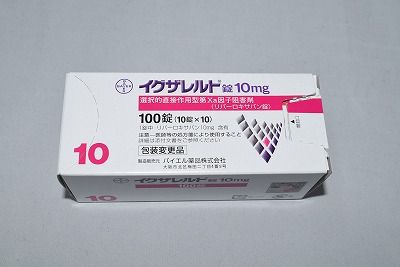Recently, many people have been asking about how to take Xarelto (Rivaroxaban), especially the differences between the 10mg and 15mg doses. Should it be taken before or after meals? Will it cause bleeding? What should you watch out for?
As a pharmacist, today I’d like to explain this medication in the simplest terms and share some practical tips for using it safely.

Xarelto (Rivaroxaban) 15mg Tablets – 100 Count | Anticoagulant for Stroke and Clot Prevention
1. What Is Xarelto?
In simple terms, Xarelto (Rivaroxaban) is a blood thinner (anticoagulant). It helps prevent dangerous blood clots from forming in the body.
It’s commonly used to prevent stroke caused by atrial fibrillation (AFib) and to treat or prevent deep vein thrombosis (DVT) and pulmonary embolism (PE).
2. What's the Difference Between 10mg and 15mg?
15mg
Mainly used for patients with non-valvular atrial fibrillation to help prevent strokes.
This is a common and stable dose.
Dosage: 15mg once daily
✅ Must be taken with food to ensure proper absorption.
10mg
Usually used during the maintenance phase after initial treatment for blood clots, or in patients with mildly impaired kidney function.
Lower dose means slightly lower risk of side effects.
Often used for prevention of recurrent DVT or PE.
Dosage: 10mg once daily
✅ Can be taken with or without food, but taking with food is recommended to reduce stomach upset.
? In short: 15mg is not “better” than 10mg — the right dose depends on your condition and what your doctor prescribes.
3. How Should You Take It — With or Without Food?
15mg: Must be taken with food, as taking it on an empty stomach reduces its effectiveness.
10mg: Can be taken with or without food, but taking it after a meal is recommended to avoid stomach discomfort.
? Tip: Take it at the same time every day to help you remember and avoid missed doses.
4. What If You Miss a Dose?
Many people worry about missing a dose. Here’s what to do:
If you realize you missed it on the same day, take it as soon as possible.
If you only remember the next day, skip the missed dose — do NOT double up.
❌ Never take a double dose to “make up” — it can greatly increase bleeding risk.
5. What Should You Watch Out For While Taking It?
Watch for signs of bleeding like:
Bleeding gums
Easy bruising
Blood in urine
Black or tarry stools
⚠️ Let your doctor know immediately if any of these happen.
Never stop the medication suddenly without consulting your doctor — stopping suddenly may increase the risk of clots.
Before surgery or dental procedures, inform your doctor or dentist that you’re taking Xarelto.
Get regular kidney and liver function tests, especially if you have existing kidney issues — dosage may need adjusting.
6. Are There Any Medications You Shouldn’t Take with Xarelto?
Yes. Some medications may interact with Xarelto:
Certain antifungal or antiviral medications can affect Xarelto levels.
Using Xarelto together with other antiplatelet drugs (like aspirin or clopidogrel) can increase the risk of bleeding.
? Your doctor will consider the risks and benefits before prescribing combinations.
7. Summary
Xarelto is a convenient anticoagulant — unlike older drugs like warfarin, it usually doesn’t require frequent blood tests.
But it’s not a medication to be taken casually. The correct dose and timing are crucial for safety and effectiveness.
Always follow your doctor’s instructions, and don’t hesitate to ask questions if you’re unsure.
